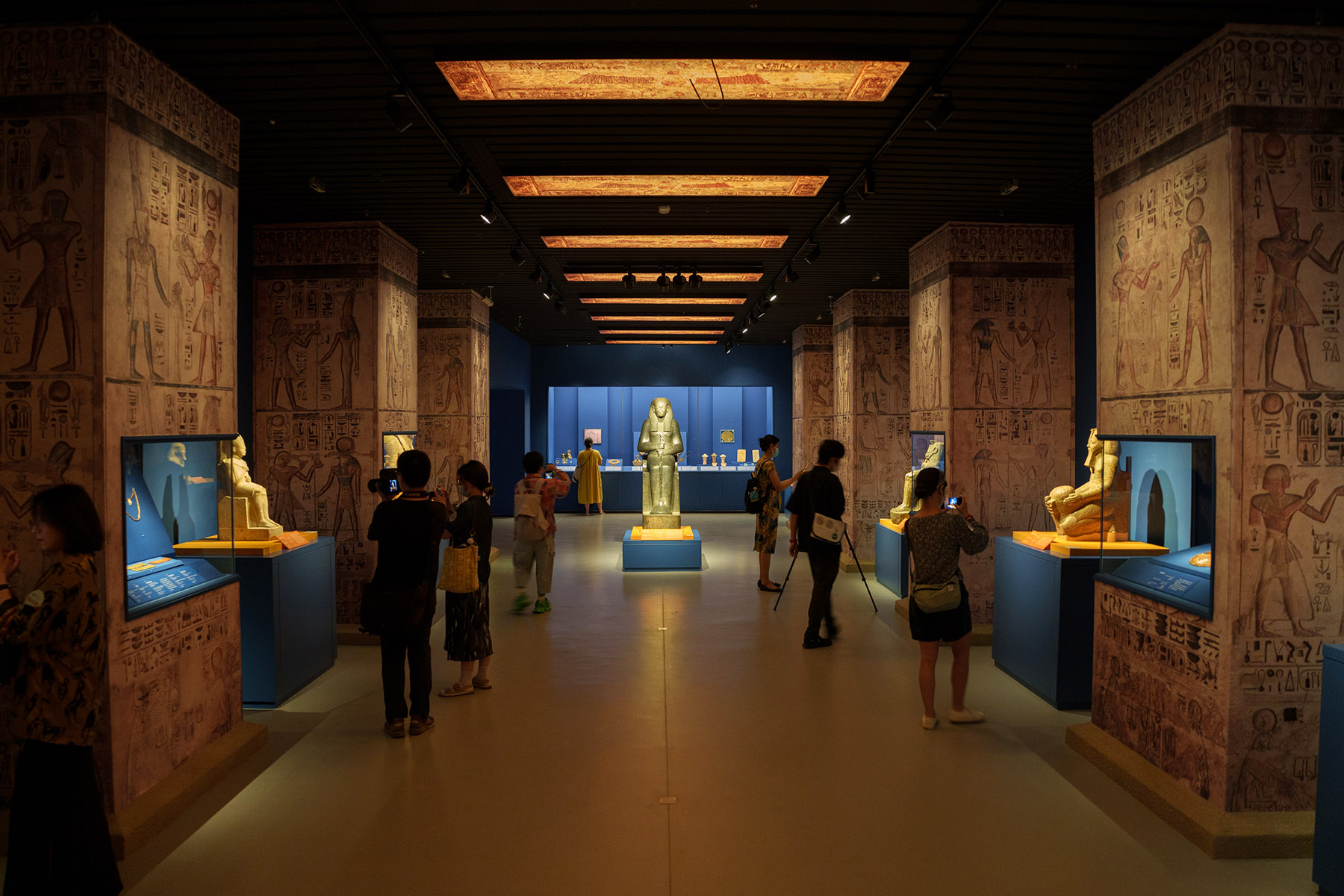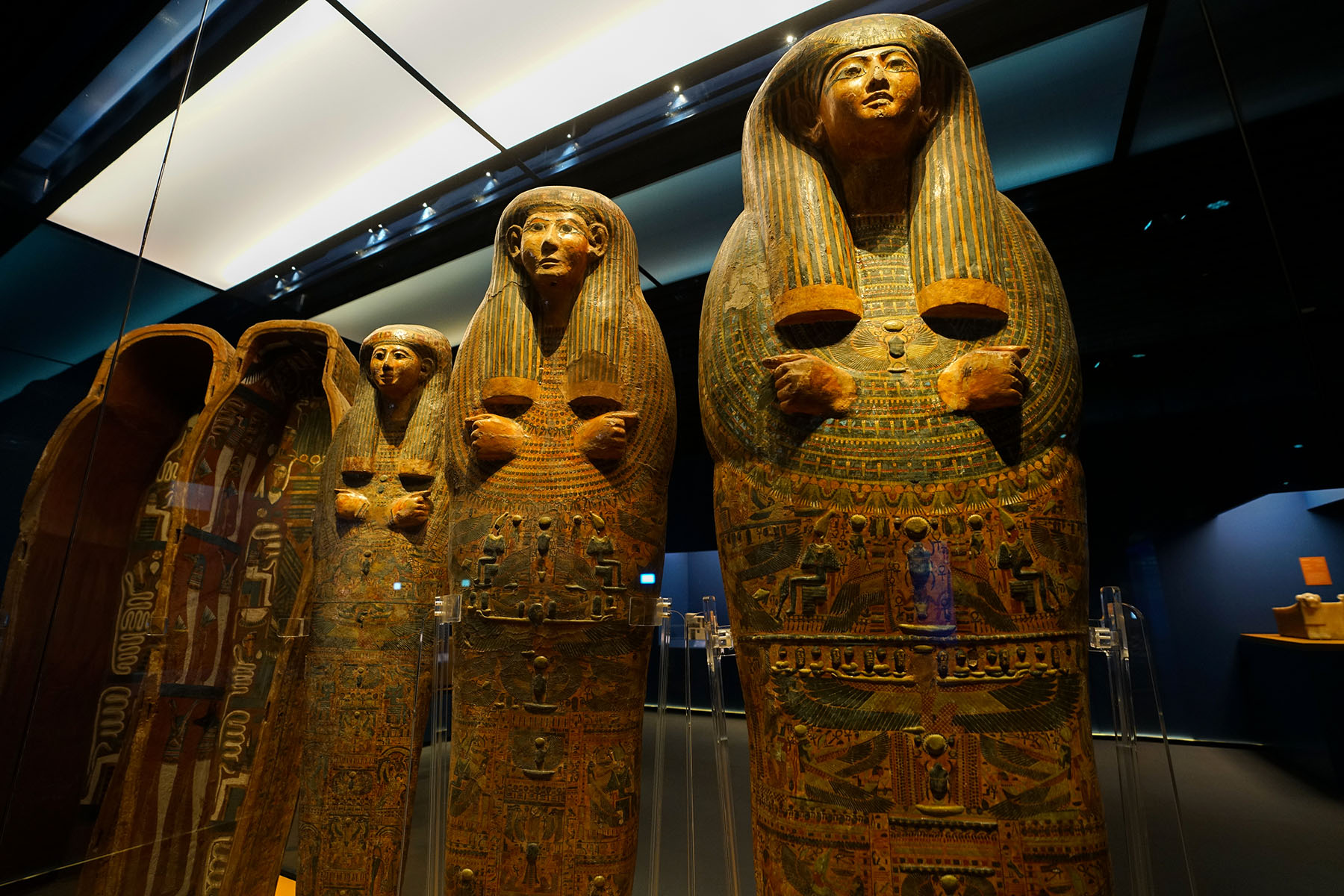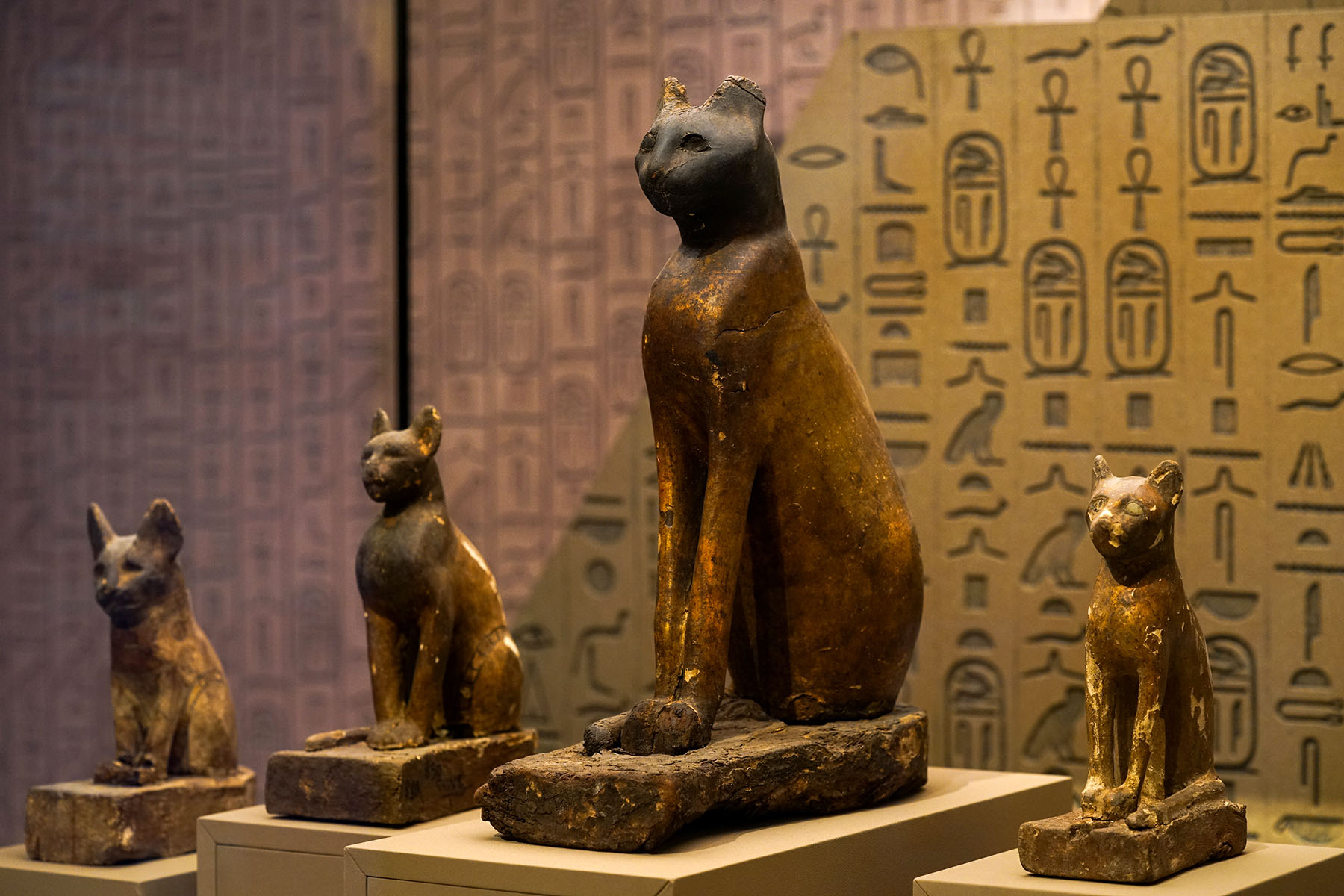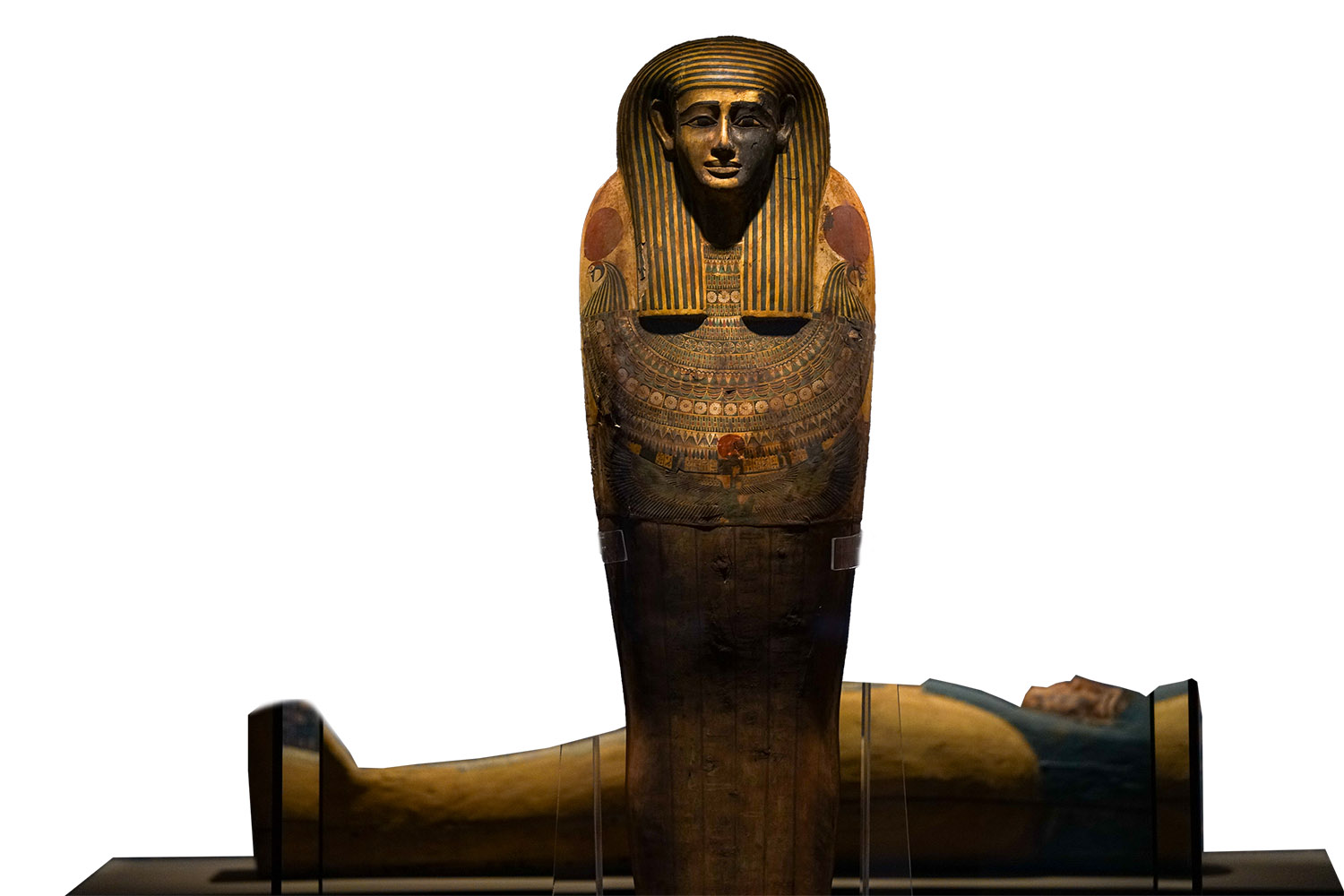Museum visitors eager to experience Egyptology exhibition

Ancient artifacts depicting the fascinating age of the pharaohs attract thousands, as tickets quickly sell out, reports Zhang Kun in Shanghai.
Despite the scorching heat of 37 C, visitors formed long lines in front of Shanghai Museum on July 19, eager to catch the first glimpse of the much-anticipated exhibition, On Top of the Pyramid: The Civilization of Ancient Egypt, which opened to the public that day.
In the coming 13 months, the largest showcase of ancient Egyptian artifacts in Asia will be held at the museum on People's Square in downtown Shanghai, featuring 788 objects selected from seven institutions around Egypt.
READ MORE: Egyptian artifacts to be exhibited in Shanghai
Shanghai Museum sold out 200,000 early-bird tickets months ahead of the opening, and a few weeks ago the museum announced that the exhibition has been fully booked for the coming two months.
The museum has an appointment system to limit the number of visitors to no more than 8,000 per day. To meet the soaring public demand to see the Egyptian artifacts, it has extended its opening hours into the evening, allowing another 4,000 visitors to see the exhibit.
On July 19, when ticket sales began for the first cat-friendly evening session on July 27, within one second, the 250 openings were sold out. The session allows pet owners to bring their cats to the exhibition to pay respect to Bastet, the ancient Egyptian cat deity.
The exhibition is "not only the first collaboration of a Chinese State-run museum with the Egyptian government but also the largest exhibition ever held outside Egypt and the highest-level exhibition ever held in Asia, displaying Egyptian artifacts, signifying a golden age when the long-standing friendship between China and Egypt enters a phase of leapfrog development", according to Chu Xiaobo, director of Shanghai Museum.
It "showcases a diverse collection that represents many facets of Egyptian civilization", according to Mohamed Ismail Khaled, PhD, secretary-general of the Supreme Council of Antiquities, the Egyptian Ministry of Tourism and Antiquities. It includes depictions of prominent Egyptian gods such as Osiris, Isis, Horus and Ptah and features remarkable items from various Egyptian kings across different dynasties, highlighting statues of high-ranking people such as officials and priests, he says.

Different from many other international shows that have taken place at Shanghai Museum, this exhibition was conceived, independently planned and curated by Chinese scholars and tailor-made for the museum, reflecting the unique Chinese perspective in the studies of Egyptology, Chu said at the media preview of the exhibition on July 16.
Staff members of Shanghai Museum flew to Egypt and worked alongside Egyptian colleagues for the selection, inventory and packaging of the artifacts, which were taken first to Cairo from different institutions around the country. The studies of ancient Egyptian civilizations were founded first by Western scholars. Chinese scholars started late compared to them in this field, but the unique interpretations by Chinese scholars will inject more diverse perspectives into the understanding of ancient Egyptian culture and history, according to Chu.
"This exhibition is a great opportunity for Egyptology in China. You can see the authentic artifacts without traveling to Egypt," Chu says. "It will also inspire more interest in Egyptian civilization in China, because public interest is the great foundation for the academic studies."

The exhibition consists of three chapters. Yan Haiying, a professor of history from Peking University, who is the chief curator of the exhibition, suggests visitors begin their tour from the first chapter, The Land of the Pharaohs, which presents an overview of ancient Egyptian civilization. Beginning with the creation myths, it explores cosmology, social hierarchy, writing, craftsmanship and burial traditions.
Among the statues, treasures and papyrus, visitors will find ink rubbings on Chinese rice paper of the Egyptian memorial plaques. They were made by Duan Fang (1861-1911), a Chinese official and epigraphy connoisseur. While passing through Egypt during a diplomatic mission to Europe, he stopped in Cairo where he bought a dozen plaques with inscriptions.
Duan was so fascinated with the mysterious Egyptian writing that he had some plaques reproduced with cement and rubbings made on Chinese paper, which he gave to friends. He "started a wide curiosity for Egypt among intellectuals in the early 1900s", Yan says.
Later, in the 1930s, a Chinese scholar named Xia Nai (1910-85) studied Egyptology in the United Kingdom.
"Chinese scholars have paid attention to Egypt as a similar civilization as ours. We may have started late, but I believe our perspectives are irreplaceable," Yan says. "In the future, people from Asia may contribute some breakthroughs in the studies of ancient Egyptian writing."

Yan recommends visitors step into The Age of Tutankhamun, a cross-section of ancient Egypt dating to 1500 BC. During the reign of Tutankhamun, the traditional Egyptian religion and art were restored, which had been set aside by his predecessor Akhenaten. In 1922, the discovery of King Tutankhamun's tomb shocked the world and inspired great public fascination for Egyptian civilization in the West.
Visitors to the museum can view the latest discoveries from Saqqara. Since 2018, archaeologists have made remarkable discoveries in Saqqara, including Egypt's largest animal mummy cemetery, the most intact mummification workshop, the only remaining temple dedicated to Bastet and thousands of intact painted wooden coffins.
ALSO READ: When ancient Egypt comes to China
The exhibition marks the first systematic showcase of the discoveries from Saqqara and the first time that these artifacts have been shown outside of Egypt, says Khaled. "It reflects Egypt's good relationship with China and that Egypt is keen to treat the Chinese people differently than anyone else by showing artifacts that have never been displayed before."
This event is like "an appetizer that attracts people to visit Egypt", he says. "Egypt has 41 museums and more than 2,000 archaeological sites. We welcome all Chinese people to come and visit our monuments."
Contact the writer at zhangkun@chinadaily.com.cn


